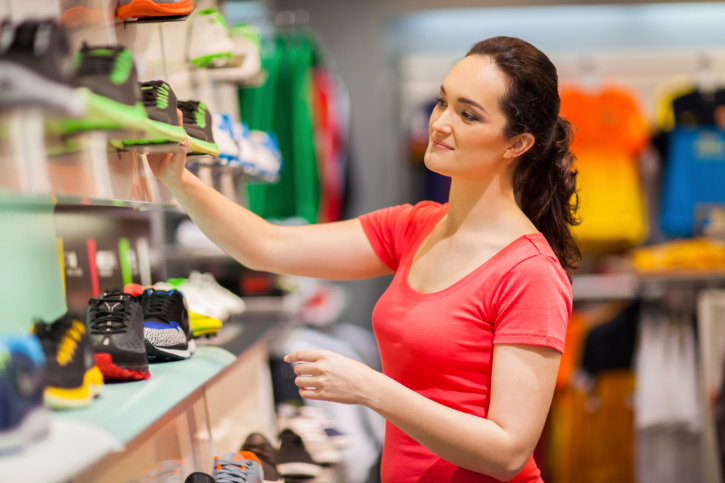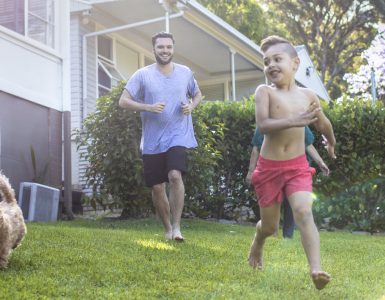It’s common to approach the sneaker aisle when needing to buy exercise shoes and feel intimidated about making a choice. The question “Which pair is right for me?” isn’t always easy to answer—especially with so many choices available! No matter what kind of workout you’re doing, choosing the right shoes is important.
Most specialty stores have knowledgeable staff that can guide you, but you’ll be one step ahead of the game if you go to the shoe store prepared with the following tips:
General tips:
- Very important: Make sure the shoe fits properly. Shoes should give you enough room for the toes to lay flat and not be cramped. The American Academy of Orthopaedic Surgeons writes that when fitting into an athletic shoe, you should be able to freely wiggle all of your toes when the shoe is on. Try to buy shoes at the end of the day so your shoes fit when your feet are at their largest.
- Double-check your shoe size. You might think you know what your shoe size is, but did you know that it changes as you age? Measure your foot before trying on any shoes, just in case your size is different than before.
- Come prepared. When you’re going shoe shopping, make sure you bring a pair of the socks you would use for the sport and try them on with the shoes. This can help you ensure the right fit.
- Know when to replace your shoes. For example, the average pair of running shoes should be replaced after about 350-400 miles of use or every 6 months. But always follow your gut with how they feel and look. If your shoes look or feel too worn earlier than expected, replace them sooner.
Tips for buying walking shoes:
Walking shoes are stiffer and usually provide more arch support. Where you walk makes a difference, too. If you usually walk on trails or uneven terrain, you can use hiking boots. But if you usually walk around the block or on a track, walking shoes that provide a larger range of motion are better. If a shoe salesperson is helping you pick your pair, make sure to tell them what types of places you normally walk.
Tips for buying running shoes:
Running shoes are more flexible with extra cushioning. If you run long distances (2 or more miles), the recommendation is to get shoes that provide extra cushion and support. The shoes may be bulkier, but in this case it’s better for your feet. Short-distance runners can use less bulky shoes that provide less traction and are better for speed.
Tips for buying shoes for aerobics, cross-training, or team sports:
Look for sturdy shoes with flat soles made from rubber or leather. The rubber outsoles provide the most traction and are better for side-to-side movement.
Tips for buying shoes for cycling:
If you’re planning to pedal away, you need sturdy shoes that provide extra support for your feet and prevent cramping. You’ll want to look for stiff soles to give you the power required to push your bike’s pedals without hurting your feet. The type of pedal you use will determine your shoe type. You can choose platform pedals that don’t require a special type of footwear and are used more for casual biking. Or you can choose clipless pedals which require cleats fitted into the shoes to connect with the pedal for more stability and a better fit while biking.
To learn more about shoe recommendations for every member of the family, click here.
For Health Advocate Members
If you’re a Health Advocate member with access to our Wellness Coaching program, call your coach for more help with finding the right exercise shoe for you, and other fitness-related information!



